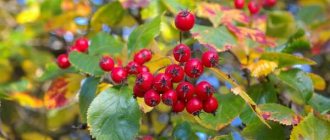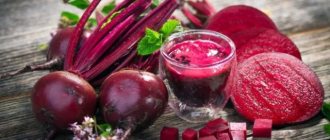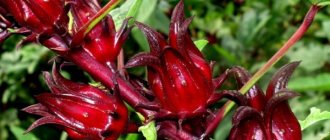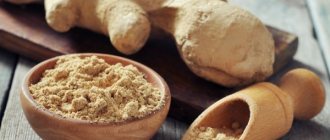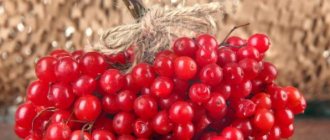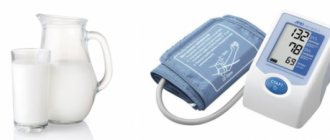Hypertension is a very common disease, especially severe in people who are overweight, lead an unhealthy lifestyle, and have little physical activity. The pathology manifests itself as sudden jumps in blood pressure, tinnitus, increased heart rate and headaches; such symptoms are unpleasant and dangerous to health.
In pursuit of a way to lower blood pressure (BP) without drugs, people turn to herbs, teas and herbal decoctions, especially in the initial stages of hypertension, when such methods can still cope with the first symptoms. Today we need to find out which tea lowers blood pressure, because today there is a wide selection of varieties and types of drink, and each of them has its own taste and properties. And also figure out whether different types of tea contribute to an increase or decrease in blood pressure levels.
Black
The drink contains caffeine, which is several times more powerful than natural coffee. Therefore, drinking tea with high blood pressure is not recommended for lovers of strong, freshly brewed black drinks. High blood pressure levels are not a reason to completely give up black tea; you can drink it, but in limited quantities and weakly brewed, for no longer than 2-3 minutes.
For hypotensive people, regular consumption of the tea drink is not dangerous; their performance increases, fatigue decreases, and headaches go away. In general, black tea is very good for health - it improves immunity, reduces weight, fights the formation of cholesterol plaques in blood vessels, and helps improve digestion. Black tea contains caffeine and catechins - these substances are perceived by the human body in different ways.
In some people, the receptors primarily respond to the intake of caffeine, as a result of which the blood vessels dilate and the pressure increases by 8–10 mmHg. In the case of a primary reaction to catechins, blood pressure values, on the contrary, decrease by several points. Therefore, it is impossible to say for sure whether black tea increases or decreases blood pressure. It all depends on the individual characteristics of the body, the type of tea and the brewing method.
To increase the beneficial properties of the drink, honey, lemon, milk, herbs and rose hips, viburnum, and rowan are added to it. Tea with mint and lemon balm has calming properties; it lowers blood pressure, improves sleep, and relieves stress and anxiety. It is useful for hypotensive patients to drink the drink 3-4 times a day, brewed for 5-8 minutes.
No ads 1
What blood pressure is considered normal?
The result of measuring pressure is two digits. The first is systolic pressure (at the moment when the heart contracts and pushes blood into the arteries). The second number is diastolic pressure (it is minimal and corresponds to the moment when the heart is relaxed). The absolute norm is considered to be 120/80 mmHg. Art., but for each person its own meaning will be normal. The individual norm depends on many factors, for example, weight and age. Also, stress, recent consumption of coffee or large amounts of liquid, overwork, physical activity, and other factors may affect the measurement results (Fig. 1).
Figure 1. What pressure is considered elevated. Source: MedPortal
Low blood pressure is considered to be below 90/60 mmHg. Art., elevated - if the values rise above 140/90 mm Hg. Art. These conditions manifest themselves in different ways.
Hypotension (low blood pressure) may cause the following symptoms:
- dizziness;
- nausea;
- loss of consciousness;
- weakness, fatigue;
- decreased concentration;
- deterioration of vision (everything becomes faded, blurry).
Hypertension (high blood pressure) may have the following symptoms:
- headaches, pain behind the sternum, in the heart area;
- shortness of breath (especially during physical exertion);
- dizziness;
- nosebleeds;
- nausea, vomiting.
Important! With both hypertension and hypotension, there may be no symptoms for a long time. Therefore, it is better to periodically monitor your blood pressure by measuring it with a tonometer.
Green
To normalize blood pressure, doctors recommend drinking green tea, as it has many beneficial properties for the body:
- reducing the amount of cholesterol in the blood and preventing the formation of plaques;
- increasing immunity, resistance to diseases of infectious and inflammatory nature;
- restoration and regeneration of damaged tissues;
- cell rejuvenation thanks to antioxidant components in the drink;
- increasing the elasticity and tone of capillaries, a positive effect on the activity of the heart and blood vessels, reducing the risk of developing heart attacks and strokes;
- normalization of nervous system functions, decreased susceptibility to stress, improved sleep.
Tea lowers blood pressure despite the presence of caffeine in the tea leaves - its effect is mild and appears only with long-term use of the drink (for 1.5–2 years in a row). In people who drink green tea for the specified period, doctors note a decrease in blood pressure by 15–20 mmHg.
Before use, it is advisable to know your blood pressure numbers.
Thanks to natural antioxidants and tannins, green tea raises the blood pressure of hypotensive patients by several units, although it has the opposite effect for hypertensive patients, stabilizing blood pressure levels. This happens if you brew and consume the drink correctly. To achieve a hypotensive effect, you should brew weak tea (within 2-3 minutes) and drink it immediately after preparation, adding ice cubes to the drink.
Hypertensive patients need to drink tea 2-3 times a day. And if you want to increase your blood pressure, brew the tea leaves for 7–8 minutes and drink the drink 4–5 times a day. Thus, drinking green tea is beneficial for both low and high blood pressure readings. And the effect of drinking tea depends on the method of brewing the drink and the desired effect.
How to choose good tea
To better assess the quality of the tea leaves, buy them in bulk. In doing so, pay attention to:
- Color, which largely determines the quality of green tea. It should be green, but shades can vary from dull to dark olive. In China, the best varieties have a pistachio color and a slight sheen of silver or gold. Do not buy tea that is too dark, because this is a sign of a violation of the production technology. This will affect not only the taste, but also the medicinal properties of the drink.
- Collection period. Find out when the tea leaves were harvested. If in the spring, then you can enjoy a soft taste with a floral, fruity or nutty aftertaste. Autumn leaves are astringent and have a lot of bitterness. Don't buy last year's tea. It can be distinguished by a large number of broken tea leaves from frequent transportation and carrying from place to place.
- Humidity. For high-quality tea it varies between 3-6%. If the indicator is higher, the shelf life of the product decreases. At 20%, the leaves can no longer be used to make a drink, because mold will form on them. This may be hazardous to your health. Dried tea leaves are also not suitable. They will turn to dust when brewing and ruin the taste.
If you decide to buy packaged tea, then the main criteria for choosing will be:
- Integrity of the package and box.
- Availability of a trademark and information about the country of origin and the date of harvest of the tea leaves. The packaging must also indicate: net weight, shelf life and storage conditions.
- Marking. Options: numbered from 1 to 7 (in order of decreasing quality). But the best tea is not designated No. 1, but “Extra.”
Attention! On the shelves you can see flavored green teas next to hibiscus. They are usually beautifully packaged and cost little. But even if the temptation is high, refrain from such a purchase. A good variety does not need flavorings: it already smells pleasant. You will not get any benefit from the drink.
Hibiscus
This variety of leaves, which is also popularly called red tea, is even more beneficial for hypertensive patients compared to green tea. The pronounced red color of the drink is given by anthocyanin, a substance that, in combination with ascorbic acid (vitamin C), amino acids, beneficial microelements, and flavonoids, strengthens vascular walls and makes capillaries elastic and unbreakable.
As a result of this effect, blood pressure levels decrease, headaches go away, the nervous system is strengthened, and sleep is normalized.
List of beneficial properties of hibiscus tea:
- increased vascular tone;
- preventing the formation of plaques in the capillary cavity, reducing cholesterol levels in the blood;
- improving blood supply to internal organs;
- cleansing the body of toxins, removing free radicals;
- providing a bactericidal and antiseptic effect.
A pronounced effect from drinking the drink should not be expected if a person drinks it occasionally, does not follow a diet and has bad habits. In parallel with taking tea, hypertensive patients need to adhere to proper nutrition (limit the amount of salt, carbohydrate and fatty foods), lead an active lifestyle and do not forget about the medications prescribed by the doctor.
To get rid of the signs of hypertension, you need to drink hibiscus tea daily, 2-3 cups a day.
Possible harm and contraindications
Green tea for hypertension should not be drunk in excessive quantities. Due to the high content of polyphenols, the drink can cause poisoning when consumed in liters. Other consequences of abuse include liver disease from intoxication and urolithiasis.
Contraindications to green tea for hypertensive patients:
- Stones in the kidneys and urinary organs;
- Insomnia;
- Gout;
- Peptic ulcers of the gastrointestinal tract;
- Lactation period;
- Alcohol intoxication.
Attention! To normalize blood pressure, but not harm your health, you need to take 1-3 cups of green tea. This corresponds to 200-600 ml per day.
Herbal
The main advantage of herbal decoctions and teas is that you can drink them with high blood pressure, especially if such therapy for severe symptoms of hypertension is combined with taking medications (prescribed by a doctor). Some herbs cause allergic reactions, so before using them you should make sure there are no signs of sensitization.
Unlike chemical drugs, herbs act slowly, but are much gentler and safer. For a sustained decrease in blood pressure, it is necessary to complete the entire course of treatment, at least 2–3 months. After the expiration of the period, one can note a decrease in blood pressure by 5–10 units, which is already considered a considerable achievement for people with high blood pressure. Headaches are eliminated, sleep improves, and blood vessels are strengthened.
No ads 2
Here is a list of the most useful ways to brew herbal tea that has a positive effect on blood pressure:
- Tea with bergamot. This citrus is not consumed in its pure form, but its extract is actively used in the preparation of tea drinks that have soothing, antiseptic, and tonic properties. Bergamot-based tea also stabilizes blood pressure, strengthens vascular walls, improves immunity and fights stress. For hypertension, you should brew bergamot tea for 2-3 minutes and drink it chilled, without adding sugar or honey to the drink.
- Tea with motherwort. This plant is known for its calming properties. Since all hypertensive patients experience increased nervous excitability, headaches and sleep problems, they will benefit from this tea - mix dill and caraway seeds, motherwort and valerian root, 1 tbsp. l. Brew 250 ml of boiling water and leave for half an hour. Take tea three times a day, ½ cup.
- Altai herbal collection. The tea contains herbs horsetail, yarrow, chaga birch extract, as well as rose hips, hawthorn, viburnum and other components. The drink helps supply the heart and blood vessels with useful elements, normalize the functioning of the nervous system, improve sleep, increase capillary tone and, as a result, reduce blood pressure. Altai tea should be brewed and drunk for at least a month to feel the desired effect.
Teas based on hawthorn, hop cones, mint, lavender, and mistletoe leaves also have a good stabilizing effect. Before using them to treat hypertension, you should consult with your doctor and make sure you are not allergic to the components of the tea.
Vietnamese
Among the variety of varieties, you can choose the Vietnamese tea you like best based on taste, but all types have a good ability to stabilize blood pressure. Here are several types of drink from Vietnam:
- Green tea Ginseng-Oolong. Tea in the form of greenish lumps that can open up and turn into the original leaves only after 3-4 hours of brewing. The finished drink stimulates the activity of the nervous and cardiovascular systems, has a beneficial effect on the condition of blood vessels, due to which the pressure stabilizes towards a decrease or increase in indicators. Performance and concentration improve, immunity increases.
- Puer tea. A variety of black tea that helps remove harmful substances from the body, reduce cholesterol levels in the blood, prevent the thickening of capillary walls, and reduce the risk of heart attacks and strokes. The drink also helps get rid of headaches, high blood pressure, increase alertness and resistance to stress.
- Kudin tea. A medicinal drink that helps improve the health of the body as a whole and prevent the development of many diseases. Supports the functioning of the heart muscle, stabilizes blood pressure, and has diuretic and bactericidal properties.
You should drink black or green Vietnamese tea after meals, freshly prepared, hot or warm. Tea increases blood pressure if brewed too steeply. Increased tannin and caffeine content can cause insomnia and a jump in blood pressure.
The traditional drink of Vietnam, which its inhabitants have been drinking for more than three thousand years, is tea, the most famous varieties of which are green
No ads 3
Chinese
Real Chinese tea that normalizes blood pressure belongs to the varieties Shu Puer, Shen Puer, green, red, Da Hong Pao. The drink is indicated for consumption even during pregnancy, since at this time blood pressure levels often increase, swelling occurs, and dizziness develops. Shu Puer tea does not easily reduce, but stabilizes blood pressure - with reduced levels, headaches are eliminated, cheerfulness comes, blood vessels dilate, and relief occurs.
To keep your blood pressure levels under control, it is better to choose green varieties of Chinese tea and brew it according to the following rules:
- drain the first brew, use only the second;
- brew tea with slightly cooled water after boiling;
- steep the tea for no more than 3–5 minutes;
- use the brewed portion at least 3 times.
Chinese varieties of tea do not pose a threat to health; on the contrary, its consumption helps to stabilize blood pressure, increase the body's resistance, and relieve symptoms of hypertension - headaches, fatigue, tinnitus, and weakness.
Among the variety of tea varieties, everyone can choose the one that suits their needs and symptoms - to relieve signs of hypertension, high blood pressure, and get rid of fatigue. A properly brewed drink helps strengthen the walls of blood vessels, improves the functioning of the heart muscle, stabilizes blood pressure and improves well-being. Before choosing and brewing tea, you should consult a doctor and study the rules for preparing the drink. So that it brings health benefits, is aromatic and tastes good.
Hot or cold?
What is better for hypotension: drinking hot or iced tea? Let's consider this issue in more detail.
A hot drink promotes short-term vasodilation and a sharp decrease in blood pressure. Cold, on the contrary, provokes a narrowing of blood vessels and, as a result, increases blood pressure.
In high ambient temperatures, iced tea may be harmful to your health.
Conclusion: in everyday settings, you should prefer a medium-temperature drink.

